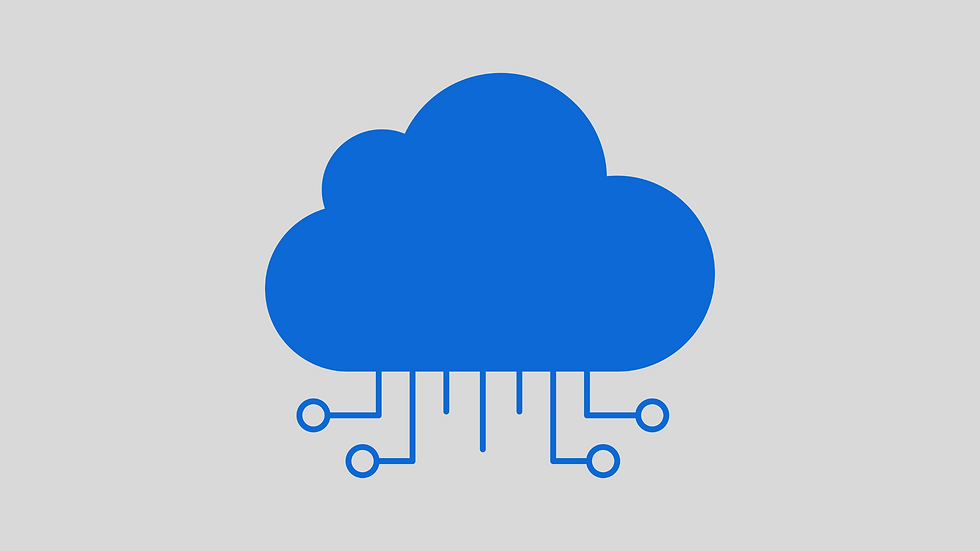From Code to Cloud: A Beginner’s Guide to Setting up Your First AWS/Azure DevOps Pipeline
- contact754672
- Aug 12
- 3 min read

As the world moves steadily toward cloud-native development, understanding how to deploy applications efficiently and reliably has become a critical skill for tech professionals. For beginners entering the DevOps field, one of the most exciting and essential milestones is building your first cloud-based Continuous Integration and Continuous Deployment (CI/CD) pipeline.
In this blog, we’ll walk you through what a DevOps pipeline is, why it matters, and how you can get started with your first pipeline using popular cloud platforms like AWS and Azure—without the complexity.
Why DevOps Pipelines Matter
At the heart of DevOps is automation. A CI/CD pipeline is a series of automated steps that take your code from a version control system all the way to deployment in a production environment. For new developers and aspiring DevOps engineers, setting up a pipeline represents more than just a technical task. It’s a foundational exercise that brings together everything you’re learning—collaboration, cloud platforms, automation, and deployment best practices. Whether you're working on a personal project or preparing for a role in a DevOps team, building a basic pipeline is the first real-world application of your skills.
What Does a DevOps Pipeline Do?
A pipeline automates the process of:
Pulling your code from a source like GitHub, GitLab, or a cloud-based repository.
Building and testing the application to ensure it’s working as expected.
Deploying it automatically to a cloud environment such as AWS or Azure.
With a properly configured pipeline, you can push code changes and see them reflected in your application almost instantly—without manual steps or downtime.
AWS and Azure: Two Powerful Platforms
1) AWS DevOps Tools
Amazon Web Services offers a suite of tools to support DevOps workflows. These include the following:
AWS CodeCommit—A secure version control service
AWS CodeBuild—A fully managed build service
AWS CodePipeline—An automation service for CI/CD
With these services, you can automate every stage of the release process.
2) Azure DevOps Services
Microsoft Azure also provides a robust DevOps toolkit, including the following:
Azure Repos—A Git repository hosting service
Azure Pipelines—A powerful tool for automating builds and deployments
Azure App Services or Azure VMs—For hosting your applications
Azure’s user-friendly interface and integration with Microsoft tools make it especially beginner-friendly.
Your First Pipeline: What to Expect
When you begin setting up your first pipeline, it helps to understand the typical workflow:
1. Store Your Code in a Cloud Repository—Whether you’re using AWS CodeCommit or Azure Repos, your code needs a home in the cloud.
2. Create a Build Process—This is where your code is compiled, dependencies are installed, and tests are run.
3. Deploy Automatically—Once your build is successful, the code is pushed to a staging or production environment.
4. Trigger with Every Change—Pipelines are designed to run automatically whenever new code is pushed—reducing manual steps and human error.
Common Beginner Challenges
Choosing the right tools and services based on your project and skill level
Understanding pipeline terminology such as build agents, artifacts, and stages
Debugging pipeline failures, which often happen due to misconfigured paths or missing dependencies
The key is to start simple and gradually expand your pipeline as you gain confidence. Most cloud platforms offer step-by-step wizards and templates to help beginners get started quickly.
How Training Helps
Courses like Path to DevOps Mastery are designed to simplify this learning curve. In the “Set up Our First Pipeline in AWS” module, for instance, learners are guided through each step with real-world examples, platform walkthroughs, and support materials. These practical exercises not only build confidence but also instill the mindset required to think like a DevOps engineer—focusing on automation, collaboration, and scalability.
Final Thoughts: Your DevOps Journey Starts Here
Your first pipeline may seem daunting at first, but it’s one of the most rewarding achievements in your DevOps journey. It represents the shift from manual development practices to modern, automated workflows. Whether you choose AWS or Azure, what matters most is that you take that first step—from code to cloud. As you continue to build, experiment, and iterate, you’ll gain the practical experience that sets you apart in today’s technology-driven job market.
Explore our Path to DevOps Mastery course and start building with confidence. Your future in DevOps starts with one automated step. For more information contact@qbend.com.




Comments